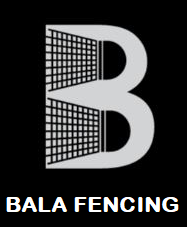ECO-FRIENDLY FENCING OPTIONS: SUSTAINABLE MATERIALS AND PRACTICES
Introduction:
Transform your boundaries discover eco-friendly fencing solutions for a greener tomorrow” as a main theme of this blog. As day-by-day people are concerning about the environmental problem. More of the people are seeking eco-friendly replacements for their fencing needs.
Here, we’ll explore the importance of long lasting and eco-friendly fence options and practices, maintaining the major features they offer for your environment and property.
From renewable materials to eco-friendly fitting methods, explore how you can build a safely environment upcoming days with your fencing choices.
BODY PARAGRAPH:
Choosing Maintainable Materials
Choosing the old-fashioned fencing materials like wood and metal can have a huge impact on environment due to deforestation and other resources extraction.
Exploring other alternative options such as bamboo, woods, composite materials, and other recycled metal, highlighting their eco-friendly properties and durability.
Reducing Environmental Footprint
Other than material selection, long lasting sustainable fencing practices can further enhance and minimize the environmental impact.
Research the techniques such as responsible sourcing, waste reduction, and energy-efficient manufacturing processes that contribute to a smaller carbon footprint.
Benefits for Biodiversity
Environmentally friendly fencing options can also benefit local ecosystems by conserving the habitat reducing pollution, and uplifting the biodiversity.
Explore how choosing the native plant species for a living fences or wildlife friendly fencing designs can create valuable wildlife corridors and habitats.
Long-Term Cost Savings
Well eco-friendly fencing options may have a slightly higher cost as compared to the upfront cost. They are way cheaper in terms of longer run, longevity and energy efficiency.
Carbon Sequestration and Climate Mitigation
Some of the long durable fencing materials, such as bamboo and other certain types of wood materials, have that ability to appropriate carbon from the atmosphere, contribute to reduce climate change.
Some long-lasting durable fencing materials, such as bamboo and other certain types of woods
Make sure how choosing these materials can contribute to carbon storage and greenhouse gas reduction efforts.
Some long durable fencing materials, like bamboo and certain types of woods, have the ability to appropriate carbon control from the atmosphere, which contribute to reduce climate change.
DIY Biodegradable Fencing Projects
For the landowners who are involved in practical projects, provide tips and ideas for creating biodegradable fencing solutions using trained materials, natural plantings, and low impact construction practices. Empower readers to take a DIY approach to sustainability in their own yard.
Conclusion
The results we make on a daily basis, such as what kind of fencing to use, mark the eco friendly environmental factors of the natural world.
By giving eco-friendly harvests and methods top import, we can create a more sustainable future for future generations.
Every decision we make about eco-friendly fence, it is for carbon reduction, construction of carbon emission, and wildlife habitat, or the ethical sources having the natural habitat.
